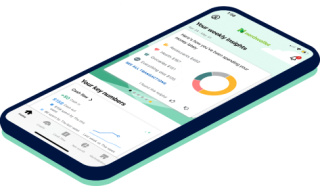How to Protect Yourself After a Data Breach

Many or all of the products featured here are from our partners who compensate us. This influences which products we write about and where and how the product appears on a page. However, this does not influence our evaluations. Our opinions are our own. Here is a list of our partners and here's how we make money.
Large data breaches that expose consumers' sensitive personal information have become a routine part of life. So it pays to know your options.
Whether your financial data has been compromised or you simply want to proactively guard your credit, follow these steps to safeguard your financial life:
1. For best protection, freeze your credit
A credit freeze makes it unlikely your stolen financial information can be used to open new accounts in your name. Most creditors check your credit history as part of the application process — with a freeze in place, they can't access your credit history and will decline to open a new account.
Freezing your credit doesn't affect your score. And when you want to open up a new credit line, you can simply unfreeze your credit temporarily.
Freezing and unfreezing your credit at each of the three credit bureaus — Equifax, Experian and TransUnion — is now free to all consumers.
2. Place a fraud alert if you can't freeze right now
If you don’t want to lock out creditors — perhaps you're in the middle of applying for a mortgage or car loan — you can instead add a fraud alert to your credit reports.
This type of alert flags potential creditors that they should verify your identity before issuing new credit in your name.
A fraud alert lasts for a year and is renewable. You need to contact only one of the three bureaus and ask for the alert; it will notify the others.
For best protection, remember to freeze your credit at all three bureaus once you're done with your applications.
3. Check all 3 credit reports
The credit bureaus offer free weekly credit reports through AnnualCreditReport.com.
Check over your reports for signs of trouble, especially:
New accounts that you didn’t open.
Credit inquiries that don’t match when you applied for credit.
Balances that don’t match your statements.
You can also monitor your credit frequently by taking advantage of a free credit report source.
4. Watch your credit card activity
Freezing can stop new accounts from being opened in your name — but it can't prevent fraudulent charges on an existing account. Protect yourself in these ways:
Stay on top of your credit card statements. Look for charges you don’t recognize and if something seems fishy, dig into it. There’s often a phone number listed along with the merchant name for each transaction.
Sign up for text or email alerts about credit transactions. Many credit card issuers let you set them for every charge, or ones above a certain dollar amount.
If you see a suspicious charge, call your issuer right away to dispute it. Most often, your liability is limited to only $50 and perhaps less.



